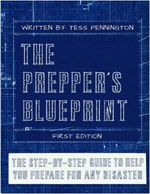
By Granny Spear
There were two types of iron years ago, the solid metal ones, flat irons which was what I had, and box iron, a similar thing, but the top of the iron where the handle is, lifted up letting you put hot embers inside to save keep reheating it.
Well my mother had one of those, and she never noticed that it was damaged and the top came off somehow and sent embers all over the place. She was wearing house shoes, rather like old-fashioned slippers, and some of the coal went inside. Her foot was badly burned and that was followed by a really severe infection. She was ill for a considerable time and the skin on that side of her foot was always tender and caused her a good deal of pain on and off until she died.
She was lucky she survived without the modern drugs that are around now. From that point ember irons were banned in our house and the solid irons took over.
You needed to have several irons, of different sizes and weights. We had one small, one large and three medium sized ones, they got the most use. You needed to have at least two of the most used ones so you could be heating one up whilst using the other. I was very lucky to have three as this cut down the ironing time as I never had to wait for the spare to be hot enough.
Unlike know when steam comes out of the iron and helps get rid of the creases, old irons were always used on totally dry clothes because they went rusty very easily.
Once the irons were heated the actual job of doing the ironing was the same as it is now.The main difference was when you were no longer getting the creases out you swapped irons.
I hated ironing in the summer, the house became unbearably hot having to light the range to heat the irons. I would be very careful wringing out the washing in the summer, making sure it went smoothly through the rollers and giving it a good shake before hanging it up to dry, far fewer creases that way which meant much quicker ironing, and less heat in the house.
Unlike modern fabrics which often can be put away without ironing our clothes were predominantly wool and cotton, some well off people had linen. Without fabric conditioner ever the bedsheets had to be ironed otherwise the creases would be scratchy and uncomfortable. you needed to reheat all three irons to do a double sheet.
Ironing was my least favourite chore, it was a long, time-consuming slog, often taking all day mainly because of the sheets.
Makes me shudder just thinking about it. If I am honest I have often wondered how I managed, but I did, you had to, you just got on with it.
When I get dressed in the mornings I am stunned by how soft the fabrics are, and how nice they smell, fabric softener is such a wonderful invention, I wish it had been around back then.
Well it’s already 9.30 over here. One of the great grandchildren has a day off school, the teachers are doing some training thing, she is coming over and we are going to play Angry Birds. I love Angry Birds, but I love fabric softener more.
Regards,
Maud




























